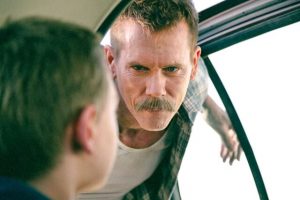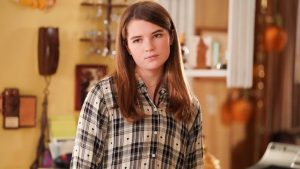
The Boy and the Heron – 99%
Reviewer Flickchart ranking: 43/3635
He shouldn’t have this much left to say, this many grotesque and fascinating creatures to invent, or this much passion for exploring the mysteries of life and death. How could he, after the long journeys he’s already taken through the realms of fantasy and memory? After four decades of iconic worlds and heroic journeys, nearly any one of which could have capped his career while he coasted into honest retirement, how did he ever finish another one this grand and this rich? How does he live this way? And please, can he never stop?
Here’s hoping Hayao Miyazaki will finish many more, but let’s consider for a moment that this might be the last great story we ever see from a person who remembers the cataclysm of World War II. We’ve seen bombing raids in anime before, but in the opening scene of The Boy and the Heron (the Japanese title translates to How Do You Live?) Miyazaki makes us feel it as he felt it at the age of four: as a haze of panic, a chaos in which authority figures shout useless instructions to people living through their individual worlds’ ends. Then we feel what came next for Miyazaki and many displaced people of his generation: a retreat to the ancient, unknown countryside, with its ancient and unknown people, its confusing relations and whispers of ancestors. And most of all, its frightening nature — as frightening in its own way as the bombs and fires that leveled the cities. Identifiably real yet surreally subjective, this is history as only a survivor can tell it.
For Miyazaki, nature is usually place of spiritual renewal, a tranquil state to which humans wish to return, but the protagonist of The Boy and the Heron relates to it very differently than the girls of My Neighbor Totoro (1988) or the children of Ponyo (2008). The adolescent Mahito, upon receiving a mysterious invitation from a grinning gray heron, takes up arms against the creature. The heron is a liar and a trickster, the frogs and fish are his nightmarish chorus, and the pelicans and parakeets that populate the cursed water and woods are starving and savage. Is this Miyazaki’s view of nature, or is it Warner Herzog’s, the man who memorably said, “The birds do not sing, they just screech in pain”?
It is Miyazaki’s, but it is a new approach for the 82-year-old. It is as if he has discovered the missing piece of a puzzle he’s been solving his whole life, like the scene when Mahito discovers a gift from his deceased mother that might be key to understanding his new, bizarre reality. Mahito does ultimately answer the heron’s call to action, and in doing so he walks a path that many Miyazaki characters have walked before, but the old milestones take on new depths. He enters a tower that exists in multiple dimensions (think Howl’s Moving Castle) and begins to explore a parallel world that is both familiar and wholly its own. There are echoes of the messianic symbolism of Nausicaa of the Valley of the Wind (1984) and the impossible architecture of Castle in the Sky (1986), but Mahito and his allies interrogate ideas that their predecessors simply accepted. When we spy a vista of ships sailing between life and death under a Renaissance sky, we remember the warplanes that ascend to heaven in Porco Rosso (1992), but this time we see it from within the numinous, liminal space itself, and the moment stretches across the runtime without losing its mystique. The experienced director stops short of tropes like “shared universes” and fourth-wall-breaking, but in The Boy and the Heron the veil between worlds seems especially permeable. It feels like there is exceptionally little gap between Miyazaki’s vision and its realization, and his favorite themes take on new immediacy as a result.
The Boy and the Heron‘s fantastical plot progresses unusually logically, never getting too bogged down in baroque plot twists. Analogies to real-world issues of loss and change are always present. Characters realign and take on new roles during their journey, but their decisions and goals are as clear in the fantasy world as they are in the “real” one, where Mahito’s father creates a new life for his family after war unmakes their old one. The war is a profound presence throughout. At one point the parakeets hold a fascist rally and their king tries to solve problems with the sword, with appropriately destructive results. Mahito’s own efforts with swords and arrows are similarly un-constructive, like the work of his father’s plane parts factory. When violence does prove necessary, it comes with a cost.
The idea of building a complex world only to see it erased serves universal truths about creativity and mortality, but it is also a literal illustration of modern Japanese history. The script dates the eerie tower’s construction to the Meiji era, which dismissed some of the remnants of feudalism in favor of European- and American-style political, social, and economic experimentation. Then came the xenophobic interregnum of the militarists. Then, after the starvation and the ashes, came a slow and painful renewal within the parameters of a new constitution and new geopolitical order. Each era’s “new” Japan was a top-down construction, a never-finished project, and each inevitably became the next era’s “old” Japan. This was the context of Miyazaki’s life, the context in which his worldview and fictional worlds took shape. Although those worlds would find adoring audiences far beyond Miyazaki’s native shores, they were almost always rooted in local conditions and populated with local characters. This was never more imaginatively true than in The Boy and the Heron, which stress-tests the building blocks of history, culture, and family, and finds that what perishes can rise again, that what is alien can be internalized, and that fear can grow to fondness.
Studio Ghibli‘s animation partners and longtime music coordinator Joe Hisaishi haven’t missed a beat in the years since their last theatrical release. If anything, they’ve only gotten better. After such a long wait it’s a relief to be able to say that about this gem of a studio, and about its soft-spoken, big-dreaming, peerless leader. The Boy and the Heron is a masterpiece among masterpieces, a surprisingly dense and profoundly rewarding work on each of the many levels it operates. Like Kiki, Princess Mononoke, and Spirited Away before it, it will serve as a wise companion on many life journeys, revealing new layers as it grows old with us.

